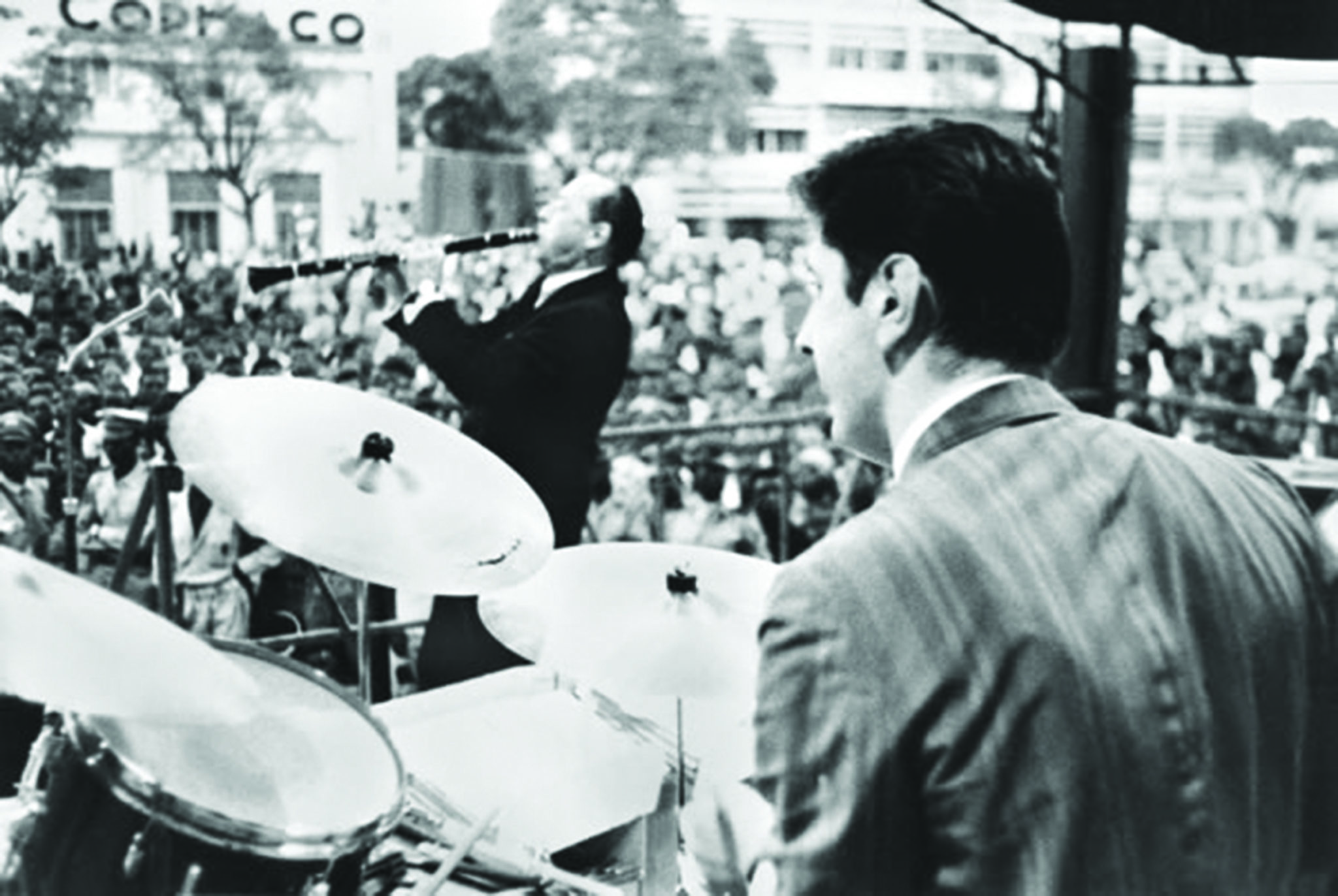TRAX ON WAX
By Sam Schiel
Published Issue 051, March 2018
Artist: Woody Herman
Title: Heavy Exposure
Genre: Jazz
Released: 1969
The big band era of the 1930s ushered in the careers of many a musician and band leader. Fletcher Henderson, Duke Ellington, Benny Goodman, Glenn Miller and Tommy Dorsey are a small sampling of players who are now considered giants of the genre. Clarinetist, saxophonist, singer and band leader Woody Herman was another huge name in swing and his hit with Woodchopper’s Ball in 1939 solidified his place in the upper echelon of jazz.
As with most bands of the era, swing was king and the strict framework of that style of jazz was adhered to by the majority of the big bands at the time, which usually consisted of 10 or more members. Herman’s bands were hand-picked and boasted some amazing and talented players who would eventually become big names on their own including Stan Getz, Zoot Sims, Al Cohn, Gene Ammons and Shelly Manne.
Woody was quite adept at tailoring his sound as the decades passed to present a style that reflected the time period. As the bebop movement began to grow and eventually overtake swing in popularity in 1946, big band leaders created trio’s, quartets, quintets and sometimes even sextets which were the norms for the new, more free-form sound that was happening. This led to numerous leaders abandoning the larger band structure altogether, although many, including Herman, would keep big bands while also offering the scaled-down combos which would continue into and throughout the 1950s.
By the late 60s and early 70s, elements of rock, soul and funk music were being embraced by jazz musicians and Herman was one of those older cats who had the vision to mix those genres with jazz and the big band structure. This era also ushered in the use of non-traditional jazz instruments like bassoon, french horn and oboe, and experimental instruments like the sitar and electric fuzz guitar which gave late 60s/early 70s jazz music a very modern sound and with-it feel. It made no difference what decade you were in or what style of jazz was being played, Woody’s bands always belted out a tight, mean sound and this sonic experiment produced some of Herman’s heaviest and grooviest material of his career.
The first Woody Herman album that showcased this fresh sound in jazz was the 1969 offering Heavy Exposure. It was released by Cadet Records and was recorded at the Chess sound studios in Chicago. Hiring only the best Herman employed a full 17-piece band for these recordings which consisted of many veteran musicians and a lot of young, new players who were all masters of their instruments. Donny Hathaway makes a guest appearance, playing organ on a few of the tracks. Production was handled by Richard Evans, who worked for Cadet in the late 60s and early 70s, doing a lot of work with Ramsey Lewis.
Opener “Flying Easy” starts off with the bossa nova pulsations of a talking drum before breaking into a full-on trumpet assault, sounding like Herb Alpert & The Tijuana Brass on steroids. A portion of this song was sampled by The Pharcyde for “Runnin’” from their 1995 release Labcabincalifornia. Next is a funked-up version of The Temptations classic dance-floor burner “Can’t Get Next To You.” An upbeat rendition of “Aquarius” follows which was a huge hit for The 5th Dimension and one of the most recorded tunes of the late 60s and 70s in every genre. Number four is a laid back yet heavy adaptation of flautist Herbie Mann’s 1969 hit, “Memphis Underground,” where the reed sections really cut-loose. The heavy drone, shrill horns and pounding sound of “Lancaster Gate” close out side one with a song structure patterned after a Scottish reel.
Side two kicks off with probably the most killer cut on Heavy Exposure. “The Hut” is one of those songs that will make you want to own this record. Heavy on the funk, this gem features a nasty and raspy, fuzzed-out electric guitar on one of the breaks that will make your ears buzz. Things mellow out with a very sultry version of Stevie Wonder’s “My Cherie Amour” leading us to another well done Motown cover of The Isley Brothers 1969 hit song, “It’s Your Thing.” Herman’s band once again lays down some very mean, dance-inducing chops on this one along with a blistering saxophone solo. Coming in fourth is “Catch That Bird,” the most pop-soaked song on the album, slightly reminiscent of The 5th Dimension’s “Up, Up and Away” and similar in feel to “Flying Easy.” The final track is a cover of Sly and the Family Stone’s “Sex Machine” from their album Stand. Like “The Hut,” this one is a longer song and its clunky and funky waltz time signature makes it a hypnotic experience.
Heavy Exposure is one of the greatest musical achievements of Herman’s career that spanned five decades. His combination and melding of musical genres and their elements created a funk/soul sound that jazz fans and critics of this period put at the top of their lists. The musicians in his band were top-notch and laid down performances that delivered a feel of a much less complicated and more carefree time in many ways, that you too can get by taking on this album.

